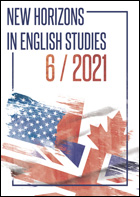Wolves in the City of Domesticated Women: The Queer Wild of Olivia Rosenthal
Wolves in the City of Domesticated Women: The Queer Wild of Olivia Rosenthal
Author(s): Paulina SzymonekSubject(s): Language and Literature Studies, Studies of Literature
Published by: Wydawnictwo Naukowe Uniwersytetu Marii Curie-Sklodowskiej
Keywords: wolves; animal studies; queer ecofeminism; trans-species urban theory
Summary/Abstract: In 2009, in the city of Nantes, a pack of six wolves was released in a public park as part of Stéphane Thidet’s art installation. A book of short stories accompanied the event. One of the authors involved was Olivia Rosenthal, who then incorporated her story into the novel Que font les rennes après Noël? (2010), in which captive wolves are reintroduced to the city. In this post-natural environment, animals provide a semblance of the wilderness for residents, yet remain enclosed in an extended zoo designed by man – an act that domesticates both sides of the fence by separating humans from wolves. Rosenthal’s protagonist is one of such captives. Her life and the lives of animals are presented in parallel narratives. She grows up in a strictly controlled environment, and social standards are imposed on her. In a semi-autobiographical vein, Rosenthal explores issues of queer and gender marginalization as well as emancipation. At the same time, she seeks to dismantle the binary oppositions that place animals, women, and non-heteronormative persons on the other side of the fence. Relying on queer ecofeminist theory developed by Greta Gaard (1997) as well as trans-species urban theory formulated by Jennifer Wolch (1998), this paper argues that we should challenge the hierarchical approach to human and non-human life, as it silences differences and denies voice, rights, and agency to women, non-heteronormative persons, and animals. Tracing inspirations behind Olivia Rosenthal’s novel, this paper also contemplates the ethics of using live animals in Stéphane Thidet’s La Meute (2009) as well as Mircea Cantor’s Deeparture (2005) – two art installations that place captive wolves in an artificial environment.
Journal: New Horizons in English Studies
- Issue Year: 6/2021
- Issue No: 1
- Page Range: 51-62
- Page Count: 12
- Language: English

